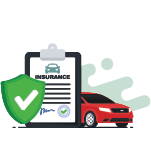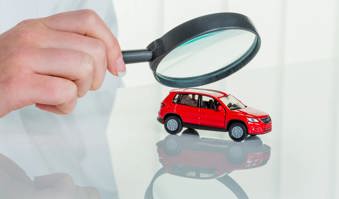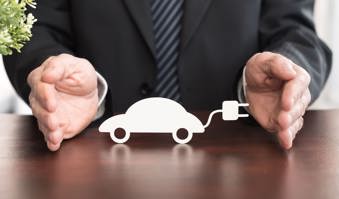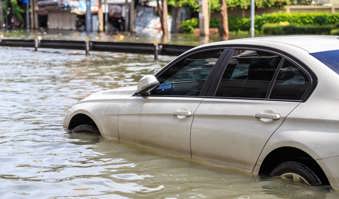11 Tips To Keep Yourself Safe While Driving Out in the Rain in UAE
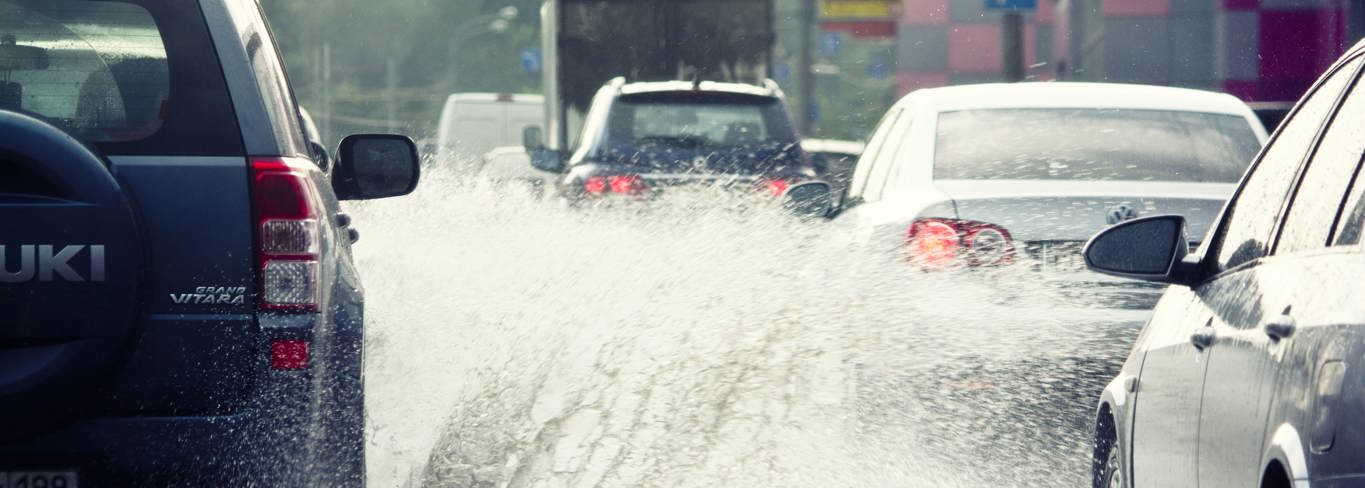 02 Feb, 2023
02 Feb, 2023
Stay safe while driving in the rain in the UAE with these 11 essential tips. Ensure a secure and cautious approach to wet weather conditions. Read more!
Dangers of Driving in the Rain & How to Avoid them
Rainy weather is a rare sight in UAE. We love when it drizzles and the hot, humid weather of UAE vanishes for a while. The air begins to cool, and we can’t help but take a break to admire the raindrops falling from the sky.
But do you also love driving in the rain? Maneuvering our cars through the water-logged roads amidst the traffic is not something we particularly enjoy during this weather.
As most drivers are used to only driving in dry weather, there is a greater risk of accidents during rainy weather. Along with the rain in UAE comes strong winds and foggy weather that lower visibility on the road. Therefore, it is necessary to develop good driving habits during the wet weather to prevent harm to yourself and others while on the road.
Quick Read Section:
- It is necessary to develop good driving habits during the wet weather to prevent accidents on the road.
- As most drivers in UAE are used to only driving in dry weather, there is greater risk of accidents during the rainy weather.
- The rain in UAE is mostly accompanied by strong winds and foggy weather that lowers visibility on the road.
- Not maintaining enough brake distance in wet conditions is one of the most dangerous risks for drivers as it does not give themselves enough space to stop when needed.
- For UAE drivers and their passengers to stay safe on the road, having well-functioning windscreen wipers, headlights, and indicators is especially important in rainy weather.
Here are some safe driving tips you need to follow to ensure that you’re steering safely through the rain:
1. Maintaining enough brake distance
In wet conditions, one of the most dangerous risks for UAE drivers is not having enough space to stop when needed. This is especially true in the event that the car ahead unexpectedly brakes or is involved in a crash.
When visibility is limited, it's important to remember that maintaining a safe distance between vehicles is key. Rather than the usual three-second gap, it should be increased to five seconds to allow plenty of time for braking when necessary.
Unfortunately, too many road incidents are caused by motorists going too fast or leaving inadequate room to brake. For those without experience driving in such conditions, it's essential to stay alert and be aware of potential hazards on the roads.
2. Utilize your wipers and lights correctly during low visibility
Drivers should make sure to have their headlights on low beam and activate both front and rear fog lights. All road users, whether it be motorcyclists, cyclists, or pedestrians - must be given extra attention and more space when driving during these conditions, as roads are likely to be quite slippery with an increased chance of skidding or losing control.
For drivers and their passengers to stay safe on the road, having well-functioning windscreen wipers, and air conditioning with appropriate speed levels is important, especially in rainy weather.
Make sure that all your vehicle’s lights, from headlights to indicators and taillights, are functioning optimally.
A dangerous practice observed on UAE roads is when motorists use their hazard lights while driving. Hazard lights should only be employed when you need to make an abrupt halt due to road hazards ahead. Those found guilty of using hazard lights without cause will be fined Dh500 and receive four black points.
If any issue affects visibility while driving, it is important to park in a secure location with hazard lights turned on as a warning signal for other drivers.
3. Avoid non-urgent journeys
During periods of heavy rainfall, it is important to drive only for essential journeys. Before embarking on a long journey, always check that your vehicle is in good working condition and fully equipped with windscreen washer fluid.
Stay up to date on weather warnings and follow the advice provided via social media or radio broadcasts.
When there is standing water on the roads, road markings can become increasingly difficult to make out; however, try not to move away from your lane as this could potentially lead to traffic coming from the opposite direction.
When natural disasters like storms and heavy rains cause damage to your vehicle, comprehensive car insurance will cover you. But the criteria for admissibility differ from one insurance provider to another. It is important for you to read the fine print about such coverage thoroughly when choosing a policy.
4. Stay within road speed limits
It is strongly advised that drivers should reduce speed gradually when heavy rain begins to fall. A wet road and low visibility caused by rainfall can be hazardous; therefore, keeping a safe distance from the car in front of you is essential to prevent accidents. Furthermore, remember that your journey while driving in rain could take up to 30 minutes more than during usual weather. Adhere to speed limits applicable for the road and also follow traffic announcements in-case of extraordinary road /traffic conditions
When driving through waterlogged roads, one should not drive fast as this can cause water to enter the air filters which are responsible for allowing the engine to breath freely. When exposed to water instead of air, it may lead to breakdowns.
5. Use indicators while changing lanes
When it comes to driving in the rain, you must not only look out for yourself but should also be considerate of other drivers on the roadway. During a heavy downpour, roads become waterlogged and visibility is greatly reduced, so making use of indicators when changing lanes becomes all the more crucial.
But remember hazard lights should only be used when parked, approaching pedestrian crossing, or stopping at the side of the road and not while in motion, as this can be distracting for others.
6. Keep your windows clean
Visibility is key when it comes to driving in the rain, so make sure you're prepared with both front and rear windshield wipers. As a driver in UAE, you may not have a lot of experience with rainfall but when it does rain proper working wipers are an absolute must! It is important to check the wipers ahead of seasonal rain; replace any that have seen damage or leave streaks when wiping the windshield.
Make sure that the rubber makes full contact with the glass, as it can break down due to extreme temperatures or sandstorms. Regularly inspecting them ensures your safety on those wet days.
7. Stay Calm
When driving in the rain, it is essential to be patient. Instead of getting angry and slamming your foot on the gas pedal, stay courteous and focus on being a safe driver. Avoid speeding and honking at other drivers as this can put yourself and others in danger.
Furthermore, keep in mind that there are likely pedestrians around so do not drive too fast through puddles in order to prevent them from being splashed by muddy water.
In the event of heavy rain and ensuing poor visibility, it is wise to reduce your speed gradually and find a safe spot. Instead of stopping on the side of a highway, it is preferable to reach a petrol station or pullover at any available rest stop.
8. Check your tyres
When it comes to driving safe on UAE roads, even a car with all the latest safety systems won't help much unless you have the right tyres. Tyres connect the vehicle to the surface of wet roads, so driving through rainy weather is not difficult when they are in good condition. But what happens when they are not in optimal shape? Hydroplaning becomes more of a risk as bad tyres cannot handle water on the road efficiently.
When water starts to accumulate between a car's tyres and the road, it can lead to hydroplaning. This loss of traction will cause drivers to lose control over steering, acceleration, and braking - all of which are critical to maintaining safety while on the road. To prevent such a dangerous situation from occurring, it is advised that tyre maintenance is done regularly and that essential tips for driving in wet weather be heeded.
9. Ensure your brake system is working
When the rain starts to pour, drivers must take extra precautions when applying their brakes. Low-grade brake pads or discs can cause your vehicle to slip and skid, so it is essential that the braking system of a car is checked and maintained beforehand.
Do not minimize the importance of taking appropriate breaks - your wellbeing and that of your vehicle depend on it. After driving through floodwater on wet roads, stop in a secure location and press down on the brakes with your foot several times. This action assists in drying out the brake pads and decreases the possibility of the car slipping.
10. Check the water level
Before attempting to cross a waterlogged patch, it is important to take a moment and assess the depth of the water. In most cases, you can safely drive through as long as you keep your speed slow enough that no splashes reach the sides. However, should the level be high enough to reach your bonnet, it would be safest to seek an alternate route or wait for the water levels to subside.
Should your car break down in these circumstances, never re-start the engine; all this will do is allow additional water into the motor, causing further damage. Then contact your insurance broker for emergency roadside assistance if your policy covers it.
11. Park at a safe spot
When deciding where to park your car, try and find somewhere slightly elevated to avoid the risk of flooding.
Before thinking about taking a drive during rainy weather, be sure to plan and calculate the additional time it may take you to reach your destination. Utilizing an official UAE government traffic app on your phone or taking note of any police updates in your area is a great way to stay informed.
Additionally, verify that all lights on your vehicle are functioning correctly - this includes headlights, indicators, and taillights - so you remain visible when changing lanes or parked along the road, even in low visibility.
Lastly, aim to remain in one lane and don't drift as this can occur due to decreased visibility. Follow these tips and be sure to have a safe journey during this rainy season.
Contact us today for all your car insurance needs.

Elevate Your Car Coverage to the Next Level!
Congratulations on taking the first step towards securing your car!
Now, imagine having even greater peace of mind with our Comprehensive Car Insurance plan.
Enjoy enhanced coverage, wider scope, and ultimate protection for your car.
Need more help?
 Buy Now
Buy Now Online Plans
Online Plans